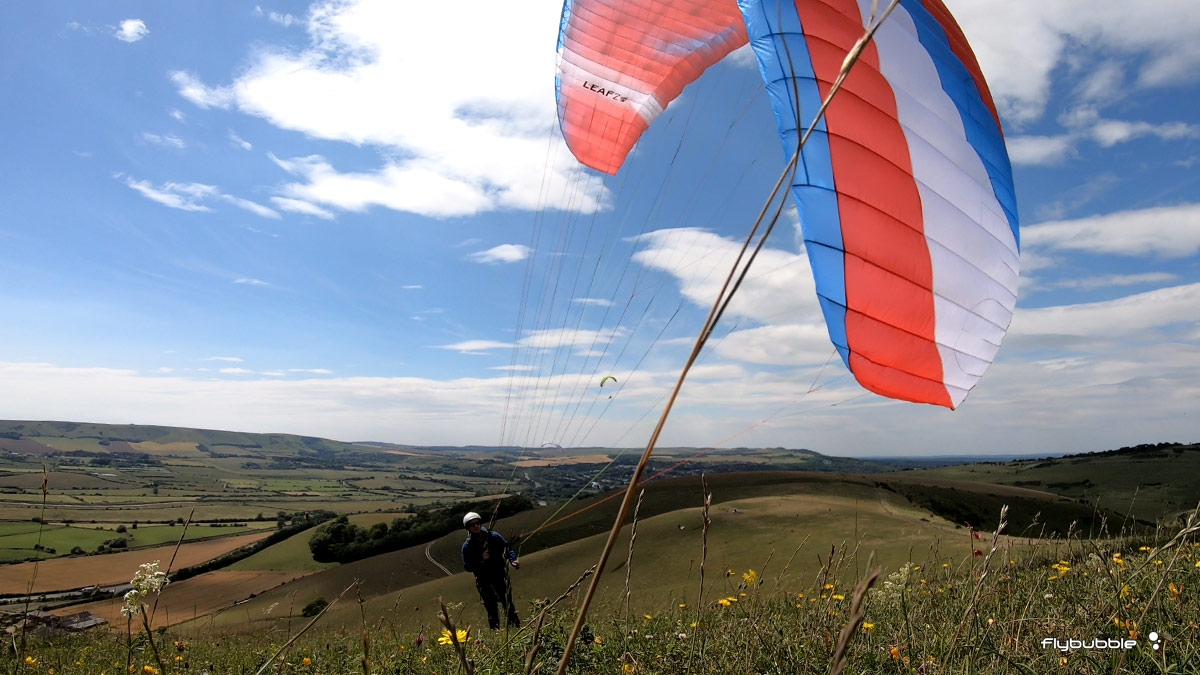
I first flew the LEAF 2 on an inverted and gusty ‘low down’ day that required fast reactions and high agility. Paired with the very stable ALTIRANDO LITE harness, I found the LEAF 2 unresponsive. It felt entirely ‘average’ and I was worried I couldn’t find anything unique or outstanding to comment on. It just kind of flew around by itself.
Knowing that the harness I use and the conditions I fly in affect the handling of a wing in a big way, I gave it a second chance, using my Strike harness which has more freedom of movement. A thermic day at Devils Dyke gave me the opportunity to mess around on the launch site, soar in traffic, climb up high, move around the sky and push the wing to its limits.
Supair LEAF 2: In the air

The real character revealed itself: the LEAF 2 is not unresponsive, it’s unreactive. It can be turned well, it’s very pleasant to thermal, it stays balanced and moderated in the turn. Weightshift has little effect on the wing, but a more agile harness helped to bring more life out of the cornering. I could feel what was happening in the air, the feedback was good but softened as a Progression wing should be. But the active air did not disturb the wing, it merely passed through the changing air current and waited for some input from the pilot.
Supair LEAF 2: On the ground
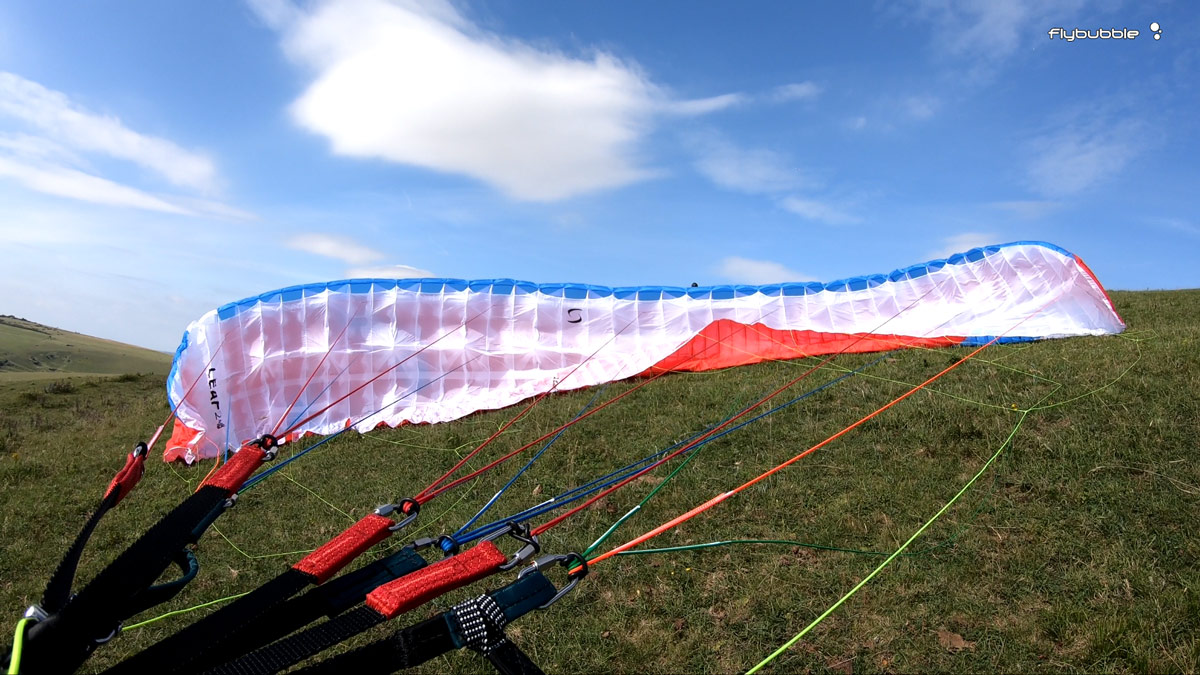
It launches in a slow measured way, but without any tendency to drop back heavily to the ground. This blend makes it simple to control, because just by leaning back you can usually recover the wing, and when it comes near to the vertical point it really slows down, helping pilots on tricky launches and in stronger conditions.
You can let it search ahead but it doesn’t really want to go far, and if you really forget to catch a pilot induced overshoot it will gently fold in, move back and reinflate before climbing overhead.
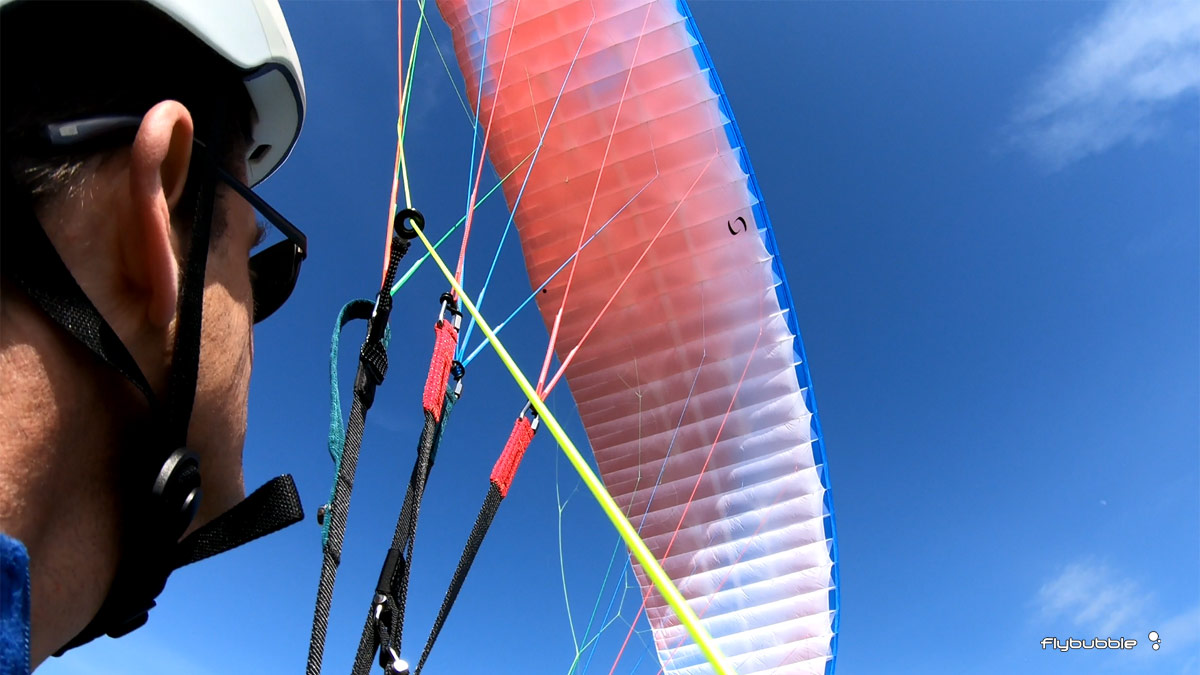
Coming back up a slope, you can get very precise kiting control using the As and Cs technique. It was easy to pin it down on the ground when the wind became severe, using the Cs. You can just let it go and it will pop up using harness pressure alone, which can be useful in some situations. It never gave me the feeling of needing fast reactions or aggressive input.
In very light conditions the launch was straight and easy.
Supair LEAF 2: At speed?
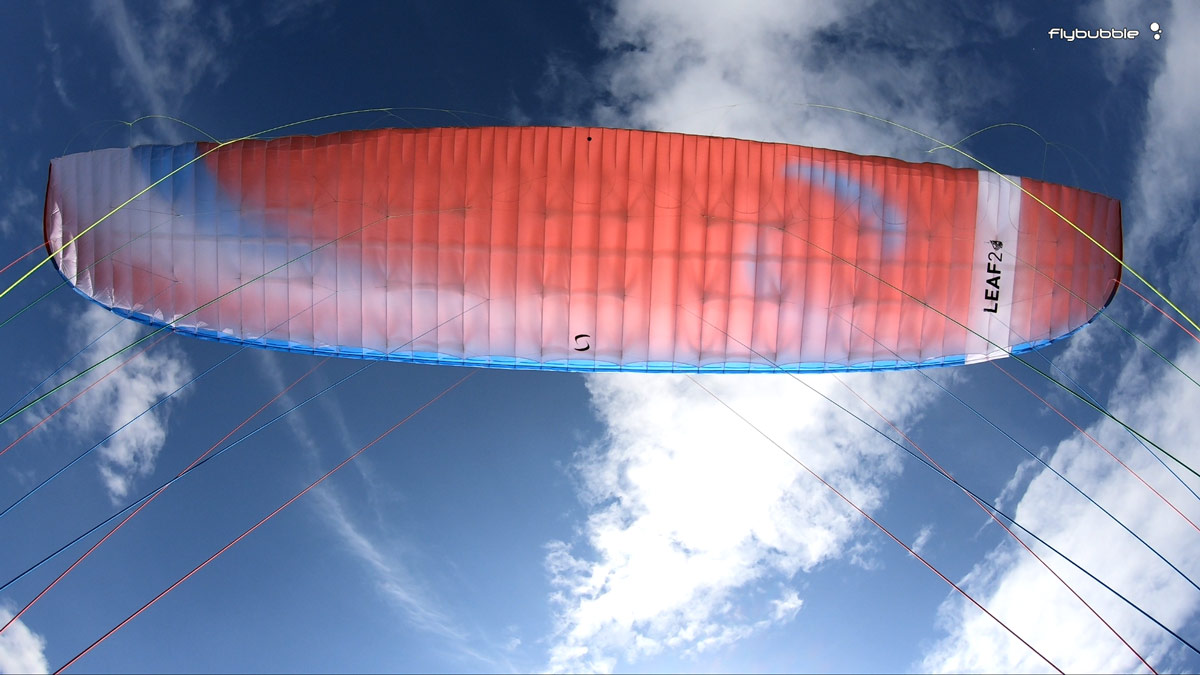
No. This is not a ‘high B’ made for accelerated transitions. The large camber of the wing which helps to generate lots of lift at low speeds produces drag when accelerated. The speedbar is easy to use, and the wing stays fully open and reassuring at full bar, but the speed is only a ‘bit’ faster than trim speed and just enough to get off the ridge as the wind picks up. That’s a limitation of the class of wing rather than the design.
Supair LEAF 2: Safety
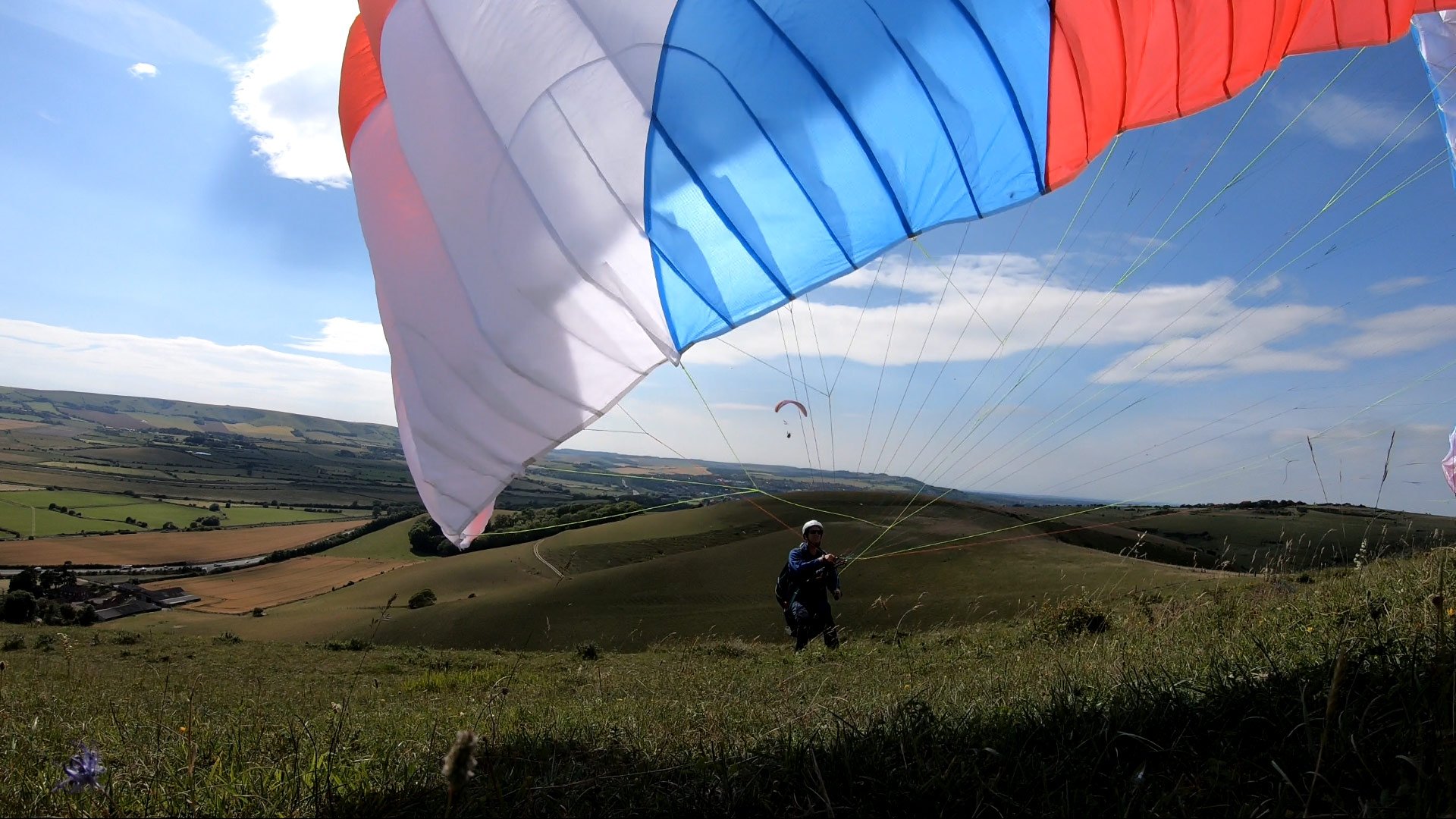
Its gentle behaviour on the ground contributes massively to pilot safety, because this is where most accidents happen.
The stall point is nice and deep, delayed, soft and forgiving. This protects beginners from bad landing approaches and surprise thermals. The few asymmetric collapses that I did were totally standard, reinflating on their own without much energy or reaction from the glider. The behaviour during a spiral is especially good, if you put your hands up it pulls strongly out of the spiral.
Low speed big ears showed no signs of stalling. They were easy to induce and cleared by themselves, even accelerated. I felt secure on the wing and could feel it was absorbing a reasonable amount of turbulence, so it has high passive safety as required by the class.
Supair LEAF 2: Who is it for?

Supair recently introduced the STEP into their range (a high B or XC wing). This allowed the lower LEAF to be re-imagined as a slightly more accessible wing at the lower end of the EN B class. So although it is still a Progression wing (intended as a second wing, after your ... you guessed it, First Wing like the Supair EONA 2) it now sits in a place where a talented beginner might safely consider the LEAF 2 as their first wing out of school. The common advice still stands: take it slowly if you are in a challenging mountain environment, where you could benefit from the security of the EN A class.
If you drew a curve of pilot ability for the Progression class, and represented all the things you’d want in a wing at that level, the LEAF 2 is exactly at the mid-point of that curve, so yes in that way it is ‘average’ but only because it matches this group perfectly.
It is absolutely simple to launch and control on the ground. It is easy to fly, undemanding, and quite responsive enough to catch thermals and enjoy your soaring. It doesn’t pitch in lumpy air and has great pitch dampening. It doesn’t roll on its own, you have to turn it, and then roll is limited. I have no concerns about trying to line up only the ‘right’ beginners on this wing. Anyone can fly it.
It helps you on the launch site and it offers just enough control response to keep more experienced pilots engaged as they cruise around on this relaxing wing.
Find out more about the Supair LEAF 2
Supair LEAF 2: Review video
Join Greg as he reports back after his second testing session on the LEAF 2.
Brought to you by Flybubble
Like what we do? The best way to thank and support us is to buy gear from us and recommend us to others. Review our service on Trustpilot and our products on Flybubble Shop. You can also subscribe to Flybubble Patreon. Thank you!

